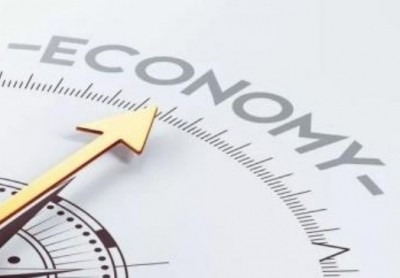India’s June Economic Report presents a nuanced picture of the country’s macroeconomic trajectory for FY26, marked by cautious optimism on growth, a benign inflation outlook, and emerging risks from global trade dynamics. While economists project GDP growth between 6.2 and 6.5 percent, external factors such as subdued global demand and tariff uncertainty could temper momentum in the coming quarters.
Macroeconomic Fundamentals and Growth Projections
The report highlights that India’s economy remains fundamentally resilient, supported by strong domestic consumption, robust services exports, and proactive fiscal measures. However, economists—not the government—are now forecasting a slightly moderated growth range of 6.2 to 6.5 percent for FY26, down from the 7.4 percent surge in Q4 FY25.
Key highlights from the growth outlook:
- UBS, S&P, and IMF project real GDP growth between 6.2 and 6.5 percent for FY26
- Domestic demand continues to be the primary growth engine, aided by easing fuel prices and tax relief measures
- Services exports now account for nearly 47 percent of total exports, offering a buffer against weak global goods trade
- Government capital expenditure is expected to accelerate, reinforcing infrastructure-led growth
Despite these positives, slowing credit growth and cautious borrower sentiment reflect underlying concerns about private investment appetite and risk aversion among lenders.
Inflation Trends and Monetary Policy Signals
India’s inflation trajectory is showing a sharp moderation, with CPI inflation for FY26 likely to undershoot the Reserve Bank of India’s forecast of 3.7 percent. The June CPI print fell to a 77-month low of 2.1 percent, driven by deflation in food prices and stable fuel costs.
Additional insights:
- SBI projects average CPI inflation between 3.0 and 3.2 percent for FY26
- Food inflation turned negative in June, with vegetable and pulse prices declining sharply
- Core inflation remains steady, though imported inflation—driven by rising gold and silver prices—has increased
- RBI may consider another 25 basis points rate cut to support growth, following a cumulative 100 bps easing in 2025
The benign inflation outlook provides room for further monetary accommodation, especially as global uncertainties weigh on investment sentiment.
Global Crude Oil Dynamics and Trade Implications
OPEC’s larger-than-expected production hike has led to subdued global crude oil prices, which could benefit India’s import bill and inflation control efforts. Brent and WTI benchmarks have dropped to multi-year lows, with OPEC’s Reference Basket falling to USD 63.62 per barrel in June.
Key developments:
- India’s diversified import strategy and continued Russian crude purchases have helped stabilize domestic fuel prices
- Lower oil prices may allow for retail fuel price cuts ahead of Diwali and state elections, boosting consumer sentiment
- ONGC’s increased domestic exploration activity reflects India’s push for energy self-reliance
However, the global slowdown and trade fragmentation pose risks to India’s export performance, particularly in goods trade.
Trade Outlook and Tariff Risks
India’s export sector faces headwinds from weakening global demand and continued uncertainty around US tariff policies. Economists warn that these factors could dampen export growth and weigh on trade performance in the coming quarters.
Trade-related observations:
- Economists expect subdued demand for Indian exports due to global slowdown and US economic contraction
- Uncertainty around US reciprocal tariffs and proposed sanctions on Russian energy trade may impact India’s strategic sourcing
- Apparel and textile sectors may retain cost advantages, but broader export competitiveness could be challenged
- India’s services exports and GCC-led outsourcing remain bright spots amid global trade realignment
The government is actively negotiating trade deals, including with the US and UK, to mitigate tariff risks and expand market access.
Final Takeaway
India’s June Economic Report underscores a stable yet cautious macroeconomic outlook for FY26. While growth is expected to remain in the 6.2 to 6.5 percent range, inflation may undershoot RBI’s forecast, offering policy flexibility. Subdued crude oil prices and resilient services exports provide support, but slowing credit growth and global trade uncertainties warrant vigilance. India’s ability to navigate these challenges will depend on agile policymaking, strategic trade negotiations, and continued investment in domestic capacity.
Sources: Economic Times, Ministry of Finance Monthly Economic Review, Ministry of Commerce trade data, SBI Ecowrap, Nuvama, HSBC Global Research, Kotak Institutional Equities, Motilal Oswal, Emkay Global





